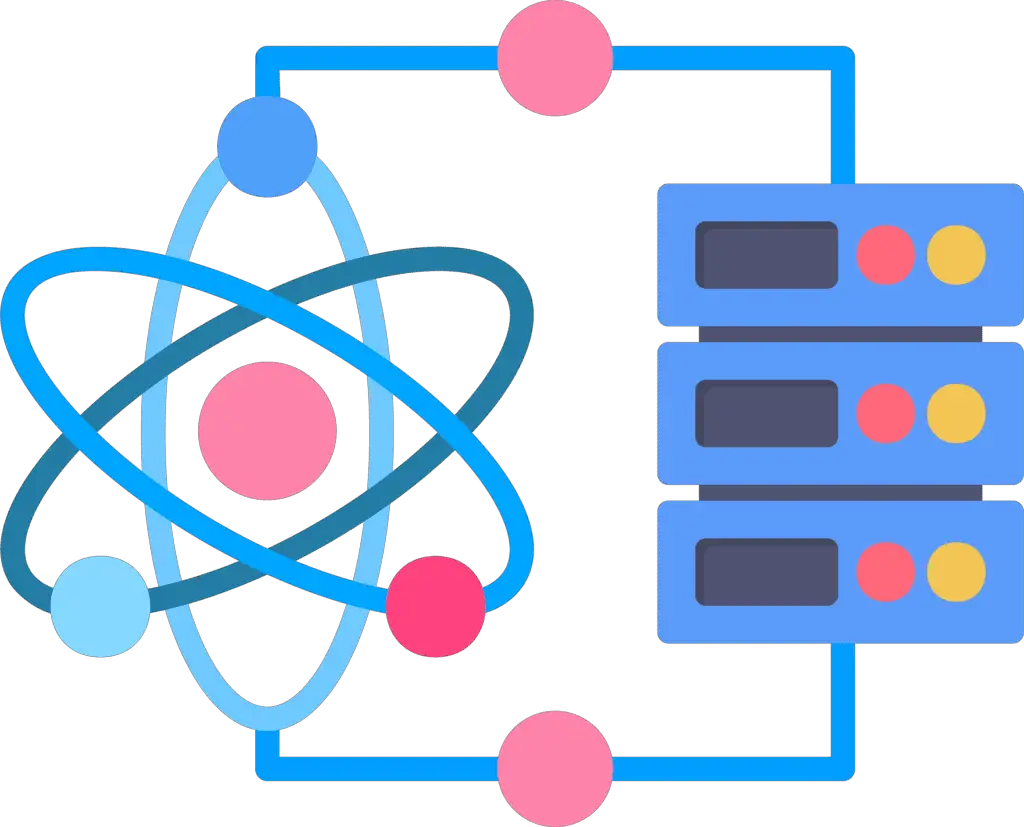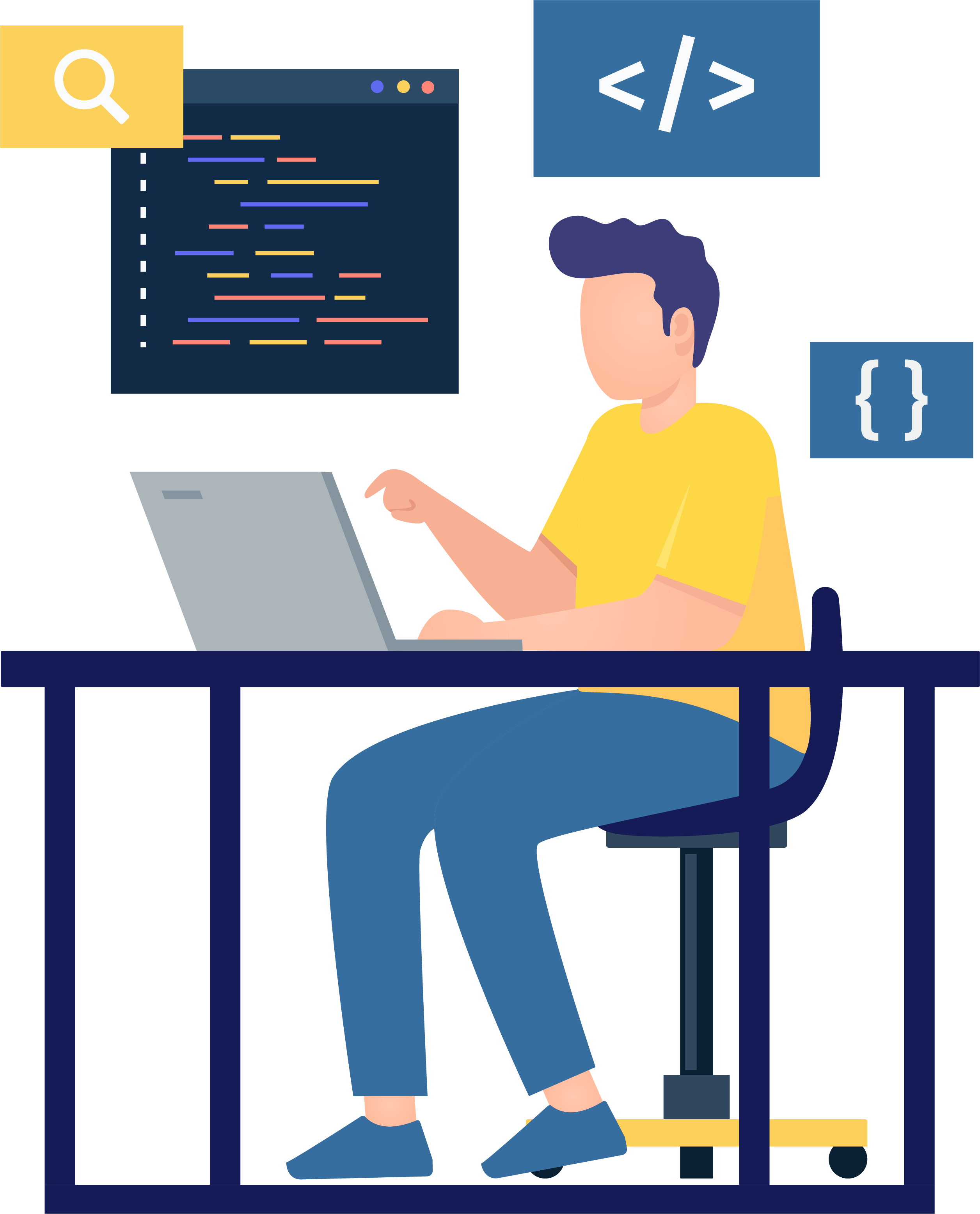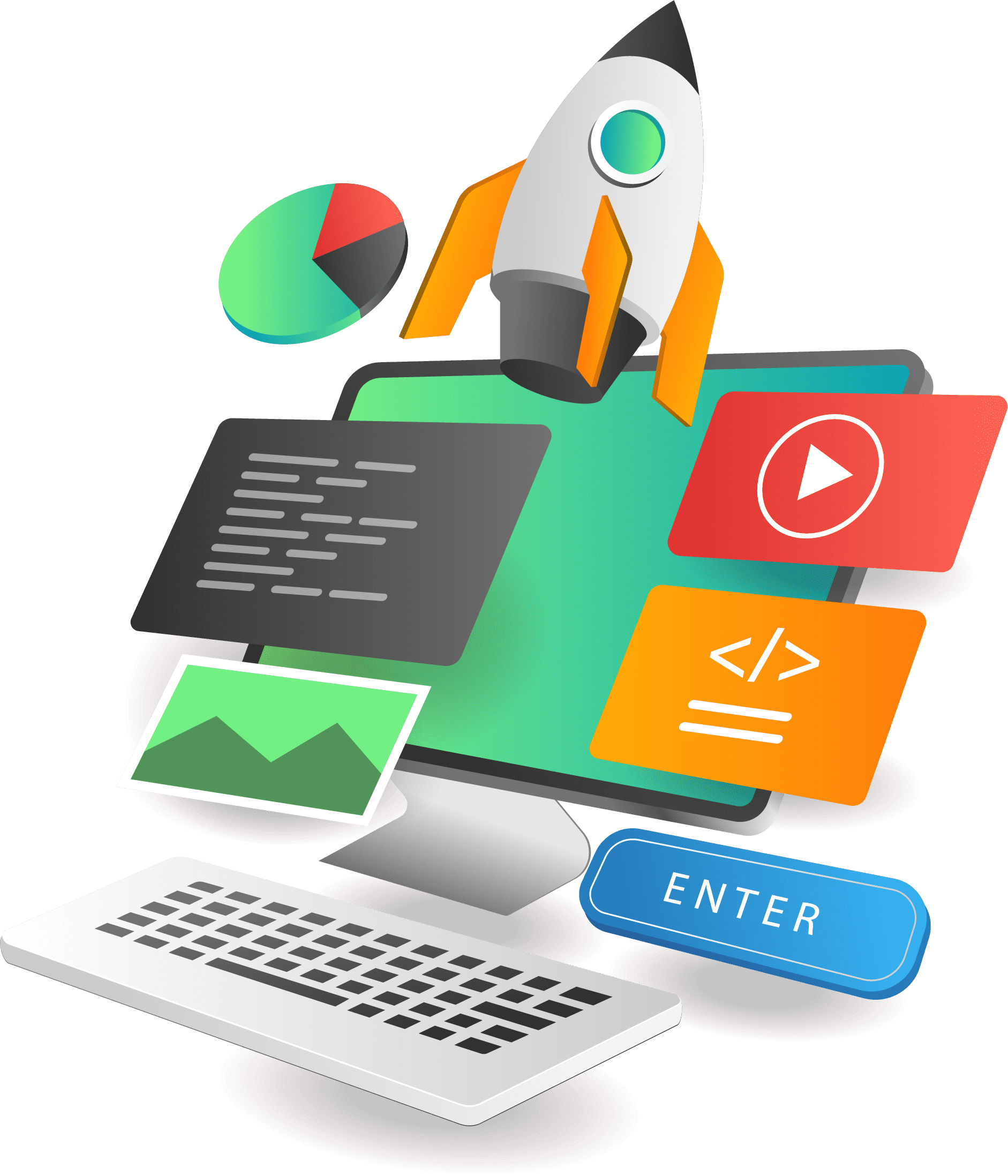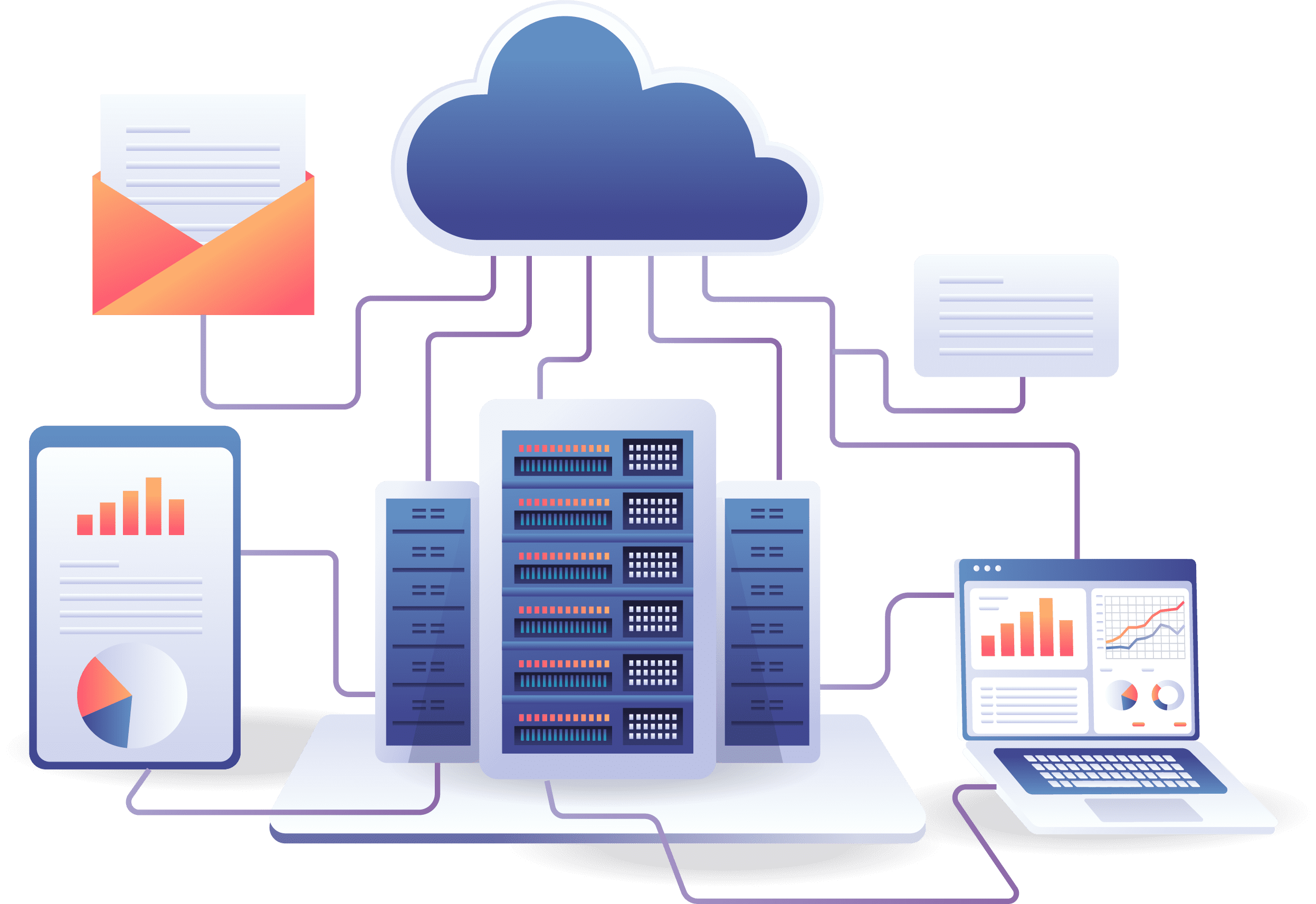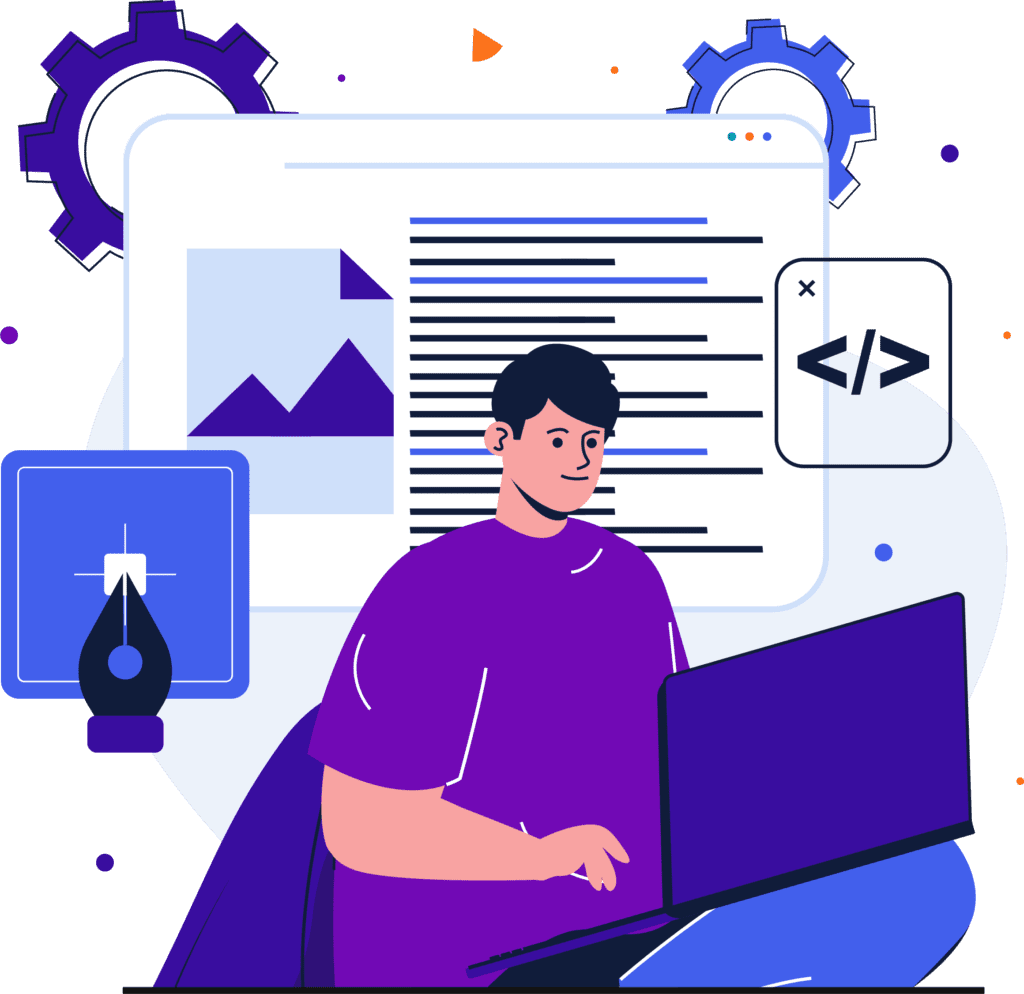Best 20 artificial intelligence projects for final year

As a computer science student, you may question how to leave a long-term mark on your final year project. Selecting a project in the final year is important for your grades and future life. Artificial intelligence projects for last year can help you get more chances and improve your resume. Artificial Intelligence is a dynamic and evolving field that offers various possibilities. In this article, we will explore a variety of innovative and interesting Artificial Intelligence projects for the final year.
What is artificial Intelligence?
When many people hear the term artificial intelligence, they usually think of robots. But artificial intelligence has almost every element of our lives, from voice assistants to independent vehicles. Artificial Intelligence is also defined
- An Intelligent Being Made by Mankind
- Able to carry out tasks wisely, even without clear instructions.
- Able to reason and behave humanely and reasonably.In your final year, diving into the world of AI allows you to add to this rapidly developing area. AI projects display technological expertise and show your ability to deal with real-world problems.
Artificial Intelligence projects for final year with source code
1. Augmented Reality- Based Learning Platform For Distance Education
The first artificial intelligence project for the final year is an augmented reality-based learning platform. Building a digital environment where students utilize gadgets to access interactive instructional information is the first step in creating a raised reality-based learning platform for distance learning. Through increased reality capabilities, the platform improves student learning by enabling them to visualize concepts and participate in virtual activities.
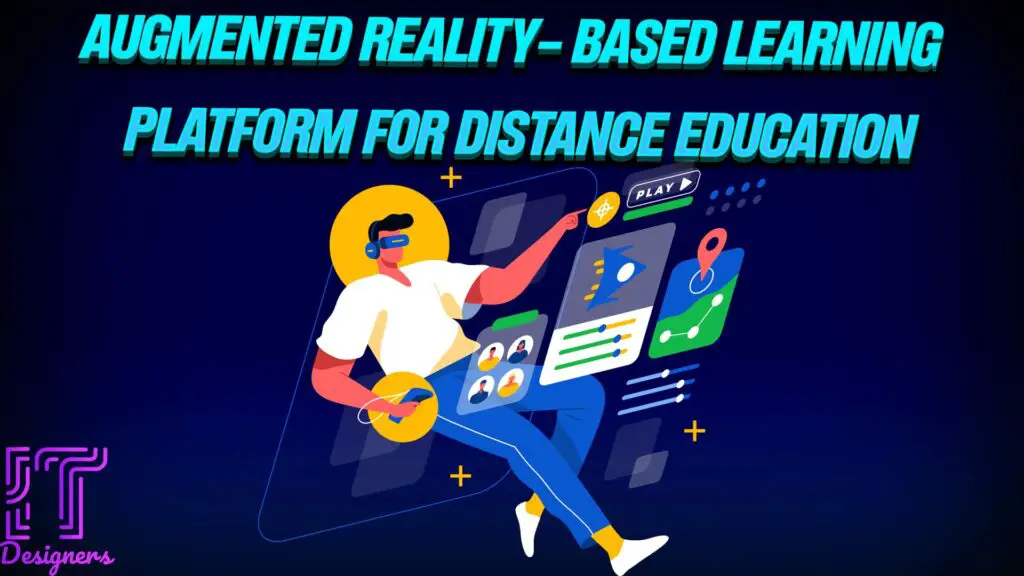
2. Development of a low cost Air pollution Monitoring System
A Low-Cost Air Pollution Monitoring System is designing a solution that allows easy and affordable air quality tracking. In this system, input comes from sensors that measure various pollutants in the air, such as particulate matter and gases. These sensors are placed strategically in different locations. The data collected is then processed and sent to a central system. The output is accessible information about air quality levels, which can be displayed on a user-friendly interface or made available through a mobile app. This project aims to provide an affordable and efficient way for communities to monitor their air quality, enabling individuals to make informed decisions about their health and environment.

3. Real Time Video Analytics and Object Detection
This project is a very simple artificial intelligence project for the final year. Real-time video Analytics and Object Detection systems involve developing a technology that instantly analyzes videos and identifies objects within them. In this system, the input consists of video feeds from cameras or other sources, and advanced algorithms process this information in real time. The system can detect and recognize objects, people, or events within the video frames. The output is valuable insights and data, such as identifying specific objects or tracking movement patterns.
4. Design and implementation of a Smart Home Using Artificial Intelligence
It aims to make homes more convenient and energy efficient while providing users with an easy-to-use and adaptable home. A Smart Home using Artificial Intelligence involves creating a system where everyday devices are connected and automated through intelligent algorithms. In this setup, the input comes from various smart devices like thermostats, lights, and sensors, which can be controlled and monitored through a central hub. The system uses artificial intelligence to learn user preferences and adjust their routines. The output is a seamlessly automated home environment where AI algorithms manage tasks such as changing temperature, controlling lighting, and predicting user needs.

5. Development of Real Time Traffic Monitoring System
It helps cities manage traffic flow, reduce congestion, and enhance overall transportation efficiency. This system involves creating a solution that continuously observes and analyzes traffic conditions. This system’s input consists of data from various sources, such as cameras, sensors, and GPS devices, capturing real-time information about vehicle movements and congestion. The system processes this data instantly to generate useful output, such as live traffic updates, congestion alerts, and suggested alternate routes. This design aims to provide commuters with timely and accurate information, allowing them to make informed decisions about their travel routes.

6. Design and Implementation Of an automated Parking System
This artificial intelligence for the final year project can simplify and optimize parking, reducing the time and effort required to find a parking spot. Designing and implementing an Automated Parking System involves creating a solution where parking vehicles are streamlined and automated. This system’s input comes from sensors and cameras that monitor available parking spaces. As a car approaches, the system processes this data to guide the driver to an open parking spot. The output is an automated parking experience, where the system controls entry barriers, shows the driver available space, and manages the parking process.
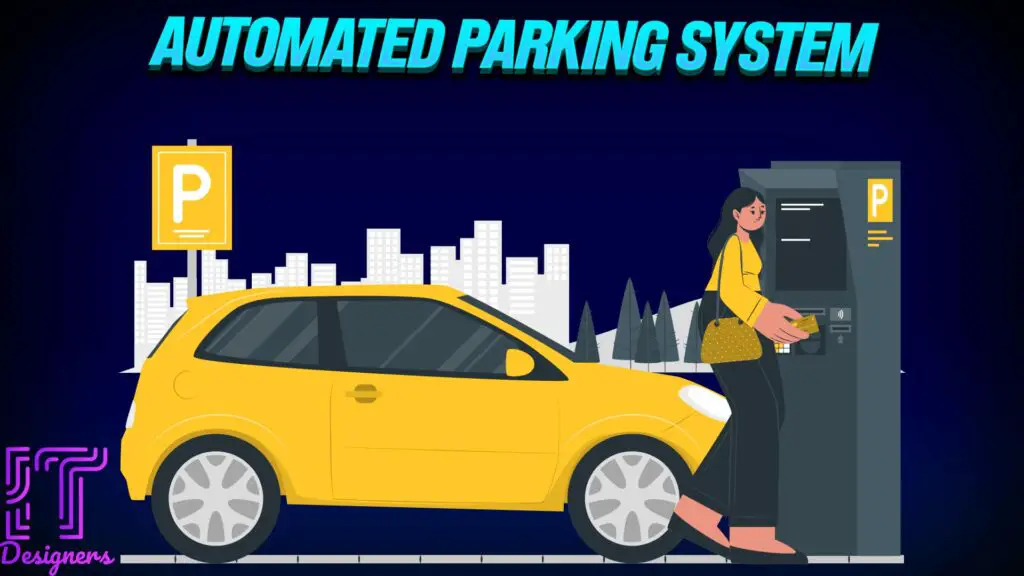
7. Design and Implementation of Autonomous Drone System
An Autonomous Drone System involves creating a technology where drones can operate independently with minimal human intervention. In this system, the input comes from pre-programmed instructions, GPS coordinates, or real-time data from sensors on the drone. The system processes this information to navigate, avoid obstacles, and perform tasks. The output is the autonomous operation of the drone, capable of tasks such as surveillance, package delivery, or capturing aerial imagery.
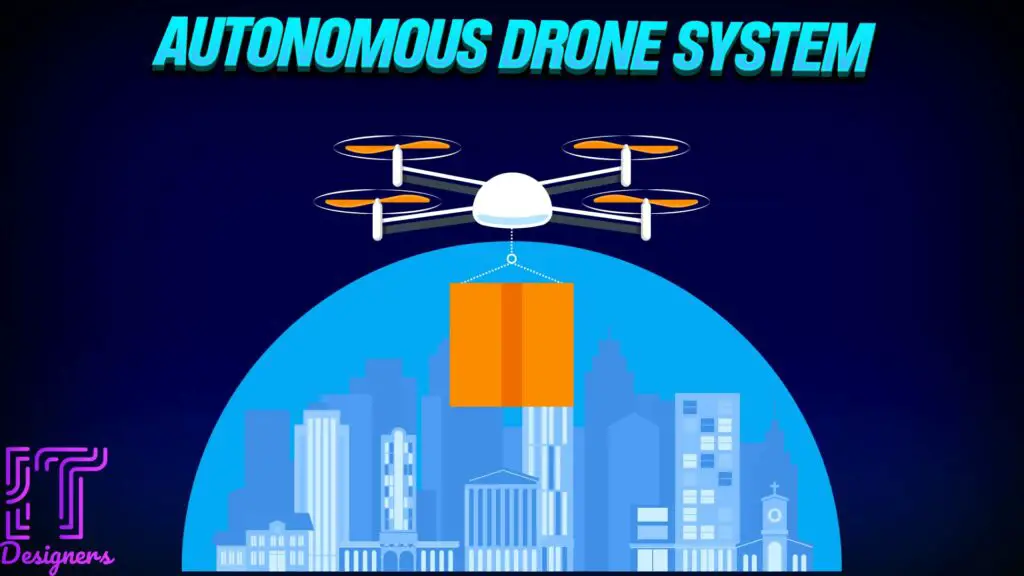
8. Artificial Intelligence In Health Care
It aims to utilize artificial intelligence to improve healthcare procedures, enhance diagnostics, and ultimately improve patient results. This System involves incorporating smart technology to enhance medical processes. This System gathers input from patient records, medical imaging, and real-time monitoring devices. Artificial Intelligence processes this information, providing valuable insights such as personalized treatment recommendations, early disease detection, and efficient management of medical records. The output is a more efficient and adaptive healthcare system that assists medical professionals in making informed decisions and delivering improved patient care.
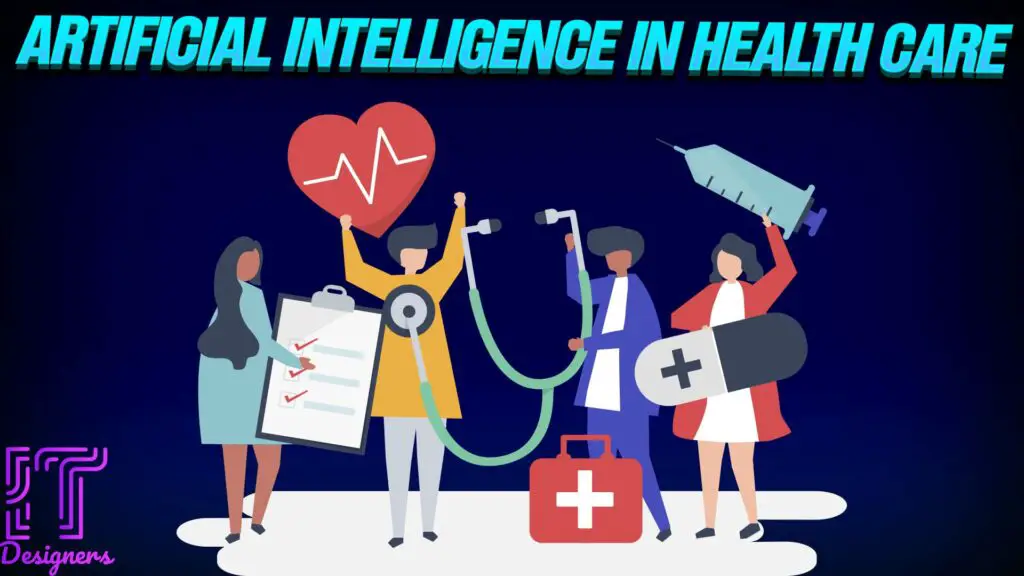
9. Development of on AI-Based Virtual persona; Assistant
AI-Based Virtual Persona Assistant involves creating a digital companion that can assist users through artificial intelligence. This system’s input comes from user interactions, queries, and preferences. The artificial intelligence processes this information to understand user needs, learn from interactions, and provide relevant assistance. The output is a virtual persona communicating with users, offering personalized information, answering questions, and performing tasks.
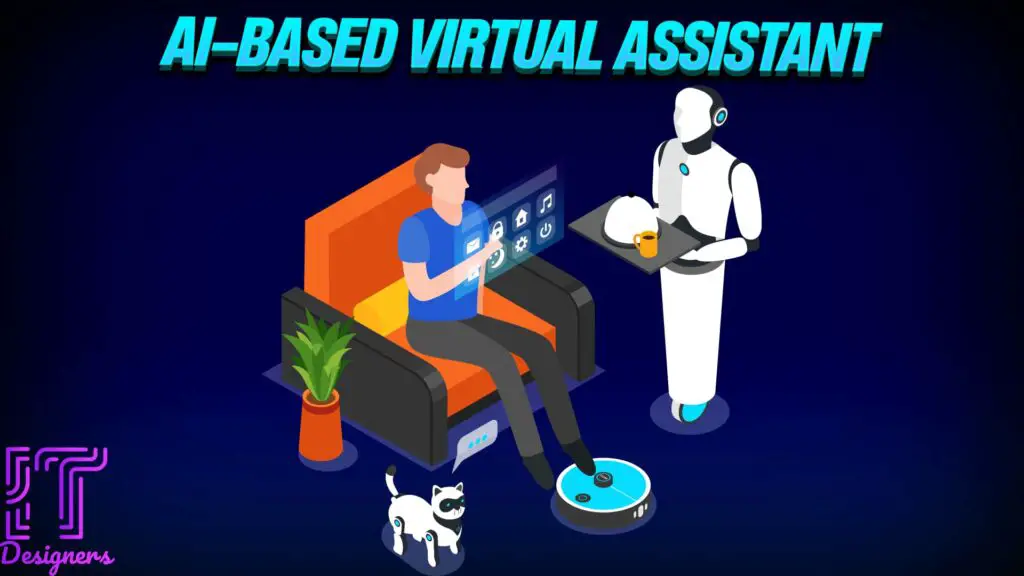
10. Design and Implementation of Autonomous Vehicle System
These artificial intelligence final-year projects help to make transportation safe and efficient by utilizing advanced technology to enable vehicles to drive themselves. An Autonomous Vehicle System involves creating a technology where vehicles can operate without human control. This system’s input comes from sensors, cameras, and data from the vehicle’s surroundings. The system processes this information to make navigation, speed, and route planning decisions. The output is the autonomous operation of the car, capable of safely navigating through traffic, avoiding obstacles, and following traffic rules.
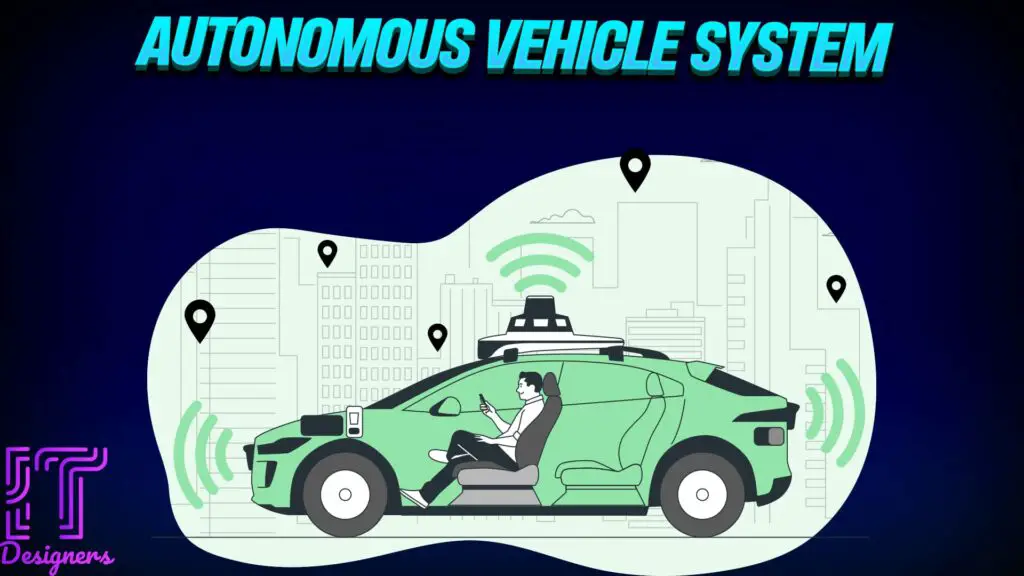
11. Development of a smart grid System for energy management
This project uses advanced features to control and optimize electricity distribution efficiently. This project uses artificial intelligence technology to make energy distribution more reliable, sustainable, and cost-effective. This system gathers input from various sources, such as energy consumption data, weather conditions, and real-time demand project. Artificial Intelligence (AI) involves to predict and analyze energy usage patterns. The smart grid’s output autonomously adjusts energy distribution, monitors demand, and optimizes the grid’s overall performance. AI is used to make smart decisions, like balancing energy supply and demand in real time, minimizing wastage, and predicting potential faults.

12. Development of an AI-Based Virtual Shopping Assistant
This artificial intelligence project for the final year helps users with their shopping needs. This project is very fascinating. Artificial Intelligence (AI) processes this information in this project to understand the user’s taste, make product recommendations, and provide personalized assistance. The output is a virtual shopping assistant communicating with users, offering product suggestions, comparing prices, and even assisting in purchasing.

13. Fake News Detection Project in Artificial Intelligence
This artificial intelligence project for the final year is an advanced Python project for detecting fake news. In this system, to identify misinformation in news articles. The input to this system includes news articles from various sources. Artificial Intelligence (AI) processes this information using natural language processing and machine learning algorithms to analyze sources’ content, language patterns, and credibility. So, we created a TfidfVectorizer on our dataset using sklearn for this project. Next, we fit the model and initialize a passive-aggressive classifier. Ultimately, the confusion matrix and the accuracy score indicate how well our model performs. Then, the output of this system classifies news articles as potentially fake or reliable based on learned patterns and features. AI distinguishes between trustworthy and deceptive content, helping users make more informed decisions about the news they consume.
14. Design and Implementation of Green House Automation System
Greenhouse Automation System creates a technology that utilizes Artificial Intelligence to optimize the cultivation environment. This project used artificial intelligence to analyze data patterns and predict the needs of the plants, ensuring efficient resource usage and maximizing crop yield. In this system, the input comes from various sensors measuring the greenhouse’s temperature, humidity, and light levels. Artificial Intelligence processes this information to make intelligent decisions regarding climate control, irrigation, and lighting.

15. Development of an AI- Based Secure Network System
An artificial intelligence-based Secure network system involves building a technology that uses artificial intelligence to make computer networks safer. In this project, AI processes this data using smart algorithms to look for unusual patterns, detect abnormal activities, and find possible security risks. The input for this system includes information from network activities, user behaviors, and potential security threats. AI continuously learns from new information, improving at identifying and stopping security problems in real-time. Using AI, the system enhances overall cybersecurity, ensuring that sensitive data is protected and network operations stay secure.

16. Development of an AI-Based Image Recognition System
This project aims to make image analysis more intelligent, allowing computers to “see” and understand visual content, which has applications in various fields, including security, healthcare, and entertainment. This project, an AI-Based Image Recognition System, creates a technology that uses Artificial Intelligence (AI) to understand and interpret images. In this system, the input consists of pictures or videos that the AI analyzes. AI processes this visual information using advanced algorithms to identify objects, patterns, or faces. The output is a recognition system that can label, categorize, or detect specific elements within images. AI is crucial in this process as it learns from vast image data, improving its ability to recognize and classify objects over time accurately.
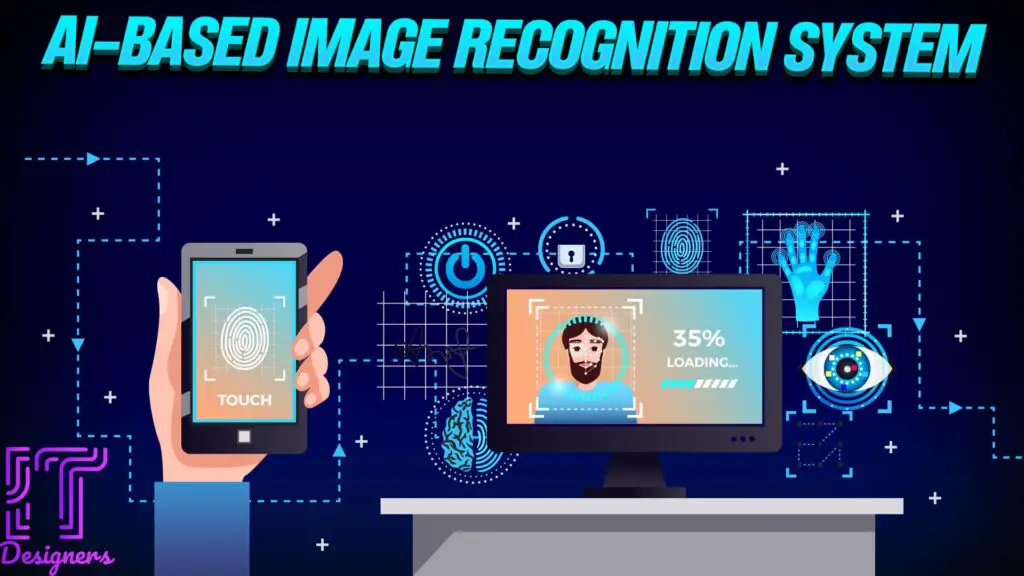
17. Plant Disease Classifier AI-Based project
This advanced artificial intelligence project is very good for the final year. Artificial Intelligence plays a role in this project by learning from a large dataset of images, continuously improving its ability to diagnose plant diseases accurately. The input for this system is images of plants with possible diseases captured through cameras or smartphones.
Some popular models for image classification tasks, including plant disease recognition, are Convolutional Neural Networks (CNNs).
CNNs are particularly effective for image-related tasks because they can automatically learn hierarchical features from the input images. Transfer learning is also commonly used in these projects, where a pre-trained CNN model on a large dataset (like ImageNet) is fine-tuned on a smaller dataset specific to plant diseases.
Then, the output is a classification system that can identify the specific plant disease based on the visual cues observed in the images.
18. Design and Implemented of an automated Farm System
This artificial intelligence project for the final year uses Artificial Intelligence technology to optimize farming processes. In this project, Artificial Intelligence models in automated farm systems include decision trees, support vector machines, and ensemble models. These models can analyze diverse data inputs and provide actionable recommendations for farm operations. Additionally, convolutional neural networks (CNNs) may be employed for tasks like plant disease detection through image analysis. The input for this system includes data from various sources, such as soil sensors, weather forecasts, and crop health monitoring devices. AI processes this information using machine learning algorithms to make decisions on irrigation, fertilization, pest control, and other aspects of crop management.
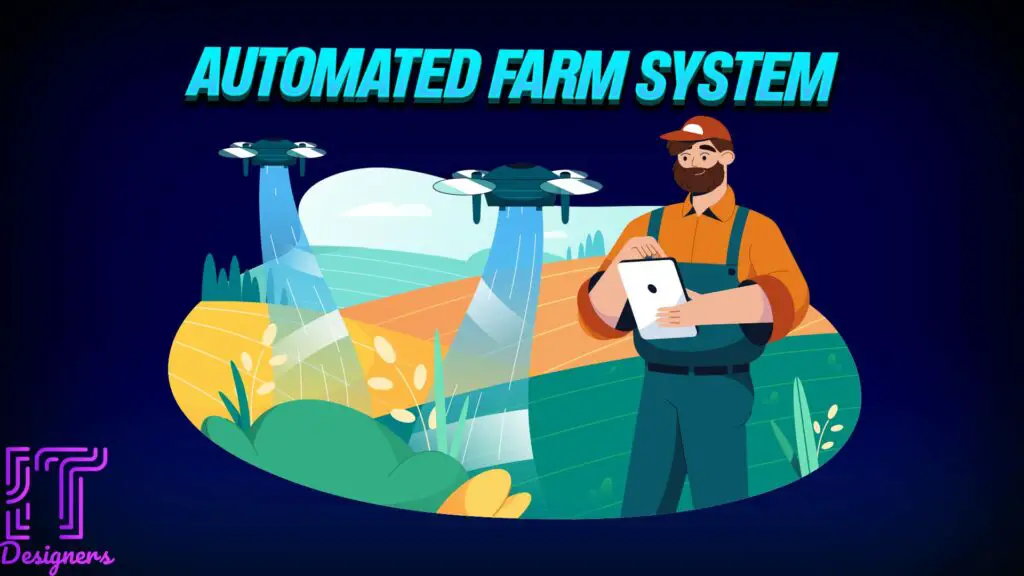
19. Development of a Wearable Biometric Sensor For Health Monitoring
This project aims to provide users with real-time, accurate, personalized health insights through wearable devices. Wearable Biometric Sensor for Health Monitoring involves creating a technology that employs Artificial Intelligence (AI) to interpret and analyze health data.
In wearable health monitoring systems, models like RNNs and LSTMs are effective because they can handle sequential data and capture temporal dependencies, making them suitable for time-series data such as heart rate trends. Additionally, machine learning models like support vector machines or decision trees may be used for anomaly detection or classifying health conditions.
In this project, Artificial Intelligence processes this data using models like recurrent neural networks (RNNs) or long short-term memory (LSTM) networks to identify patterns, deviations, and trends in the user’s health metrics. The output is meaningful insights and personalized health recommendations based on AI-driven analysis.
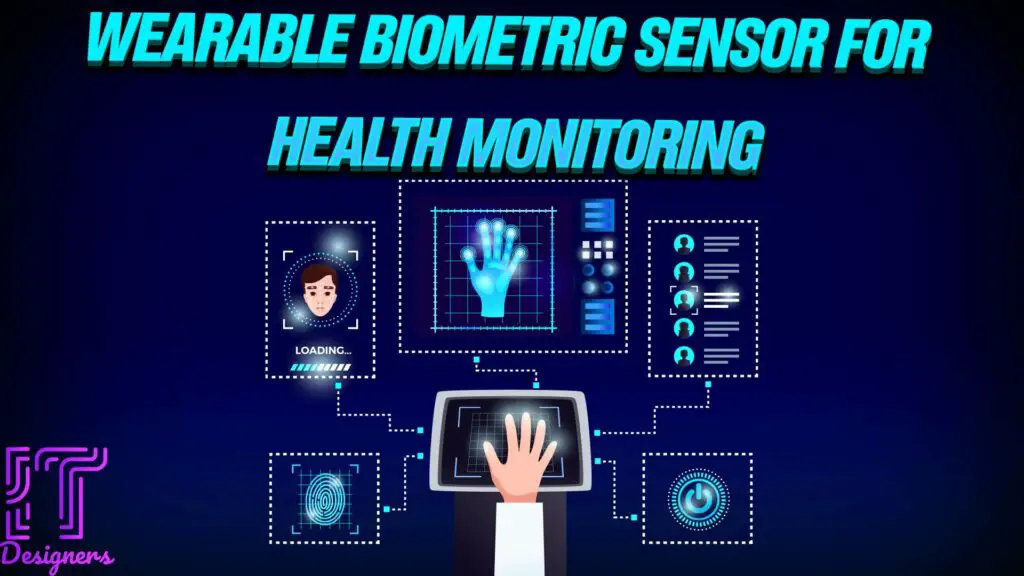
20. A machine learning Based System for Automated Diagnosed of Diseases
Developing a technique that uses artificial intelligence to evaluate medical data and help with disease identification is the first step in creating a machine learning-based system for automated disease diagnosis. The next decision trees and support vector machines are effective for structured medical data tasks. At the same time, CNNs excel at image-based diagnoses, such as identifying abnormalities in medical scans. Ensemble models, which combine the strengths of multiple algorithms, may also be used for improved accuracy.
The input for this system includes patient health records, medical images, and relevant clinical data. AI processes this information using machine learning models, such as decision trees, support vector machines, or deep learning models like Convolutional Neural Networks (CNNs) for image analysis. Based on the analysed data, the output is an automated diagnosis that suggests potential diseases or conditions.

-
Where Do YouTubers Get Their Music?
-
Top 20 Machine Learning Project Ideas for Final Years with Code
-
Why Creators Choose YouTube: Exploring the Four Key Reasons
-
10 Advance Final Year Project Ideas with Source Code
-
10 Deep Learning Projects for Final Year in 2024
-
Realtime Object Detection
-
AI Music Composer project with source code
-
E Commerce sales forecasting using machine learning
-
30 Final Year Project Ideas for IT Students
-
Stock market Price Prediction using machine learning
-
c++ Projects for beginners
-
Python Projects For Final Year Students With Source Code
-
20 Exiciting Cyber Security Final Year Projects
-
10 Web Development Projects for beginners
-
Top 10 Best JAVA Final Year Projects
-
Fake news detection using machine learning source code
-
C++ Projects with Source Code
-
15 Exciting Blockchain Project Ideas with Source Code
-
Artificial Intelligence Projects For Final Year
-
How to Host HTML website for free?





